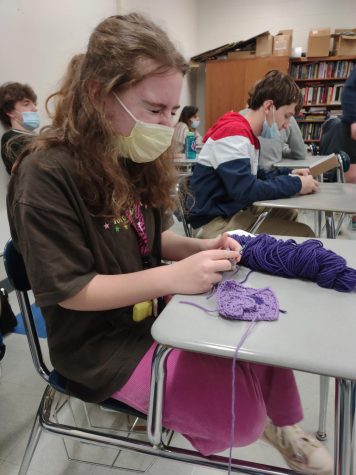Living with Food Allergies
April 12, 2018
Food allergies are undeniably terrible. Imagine never being able to eat a sandwich, indulge in some freshly caught shellfish or even having to refrain from tearing into the nearest Butterfinger on Halloween night. These are just a few of the many items that people with food allergies have to avoid.
Of course all people react differently as their bodies respond to certain food and drinks. One person might go into anaphylaxis after ingesting a sip of milk, but another might get a minimal headache. It all just depends on their immune system and how it rejects these food items.
Milk, eggs, peanuts, tree nuts, soy, wheat, fish and shellfish make up the top eight most common food allergies. Around 15 million people in the U.S. have food allergies. Among these 15 million people, 30 percent are children living with more than one allergy.
Among these popular food allergens, peanuts are reported to be the most fatal. Killing almost 200 people each year, peanuts have been taken into more careful consideration. So have the treatments found to help prevent these allergies.
Researchers and scientists have found that a small amount of peanut protein constantly consumed by children for a period of time, can have a positive effect .
Most children who were given a dose of peanut protein over a short period of time were able to develop a tolerance. Not only were they able to develop the tolerance, but they also began to eat peanuts in the future.
Another result that can be somewhat common among those with allergies is the possibility of outgrowing them. Depending on how serious one’s allergic reaction is to a particular food, someone can simply “stop being allergic.”
It is more common for someone to outgrow a milk, soy or wheat allergy than it is to outgrow a peanut, tree nut or shellfish allergy. If a child has not outgrown a more serious allergy by age 8 through 10, then it is highly unlikely the child will ever grow out of it.
Another huge factor that goes into food allergies and how to be cautious is always reading the label on food items. Even if someone is pretty sure that there are no harmful allergens that could hurt them, always check. As cliche as it sounds, it is better to be safe than sorry.
To ensure the safety of the students in the school system and to prevent life-threatening situations regarding allergies from happening, teachers are required to take a course twice a year so they are aware of the signs and symptoms of someone with allergies.
“The school nurses train all the staff twice a year on signs and symptoms and how to administer epinephrine or Epipen,” said Public Health Nurse Christy Glenn.
Many effective precautions have been taken into consideration when it comes to allergies whether it be in school, work or at a sports event. Many schools have designated areas within their cafeterias for those with allergies that would like to be seated away from people with food items they are allergic to.
Many sporting events sell concessions containing many common allergens. Across the globe, many little league fields have prohibited peanuts from entering the dugouts. This is to ensure the safety of each player who has a peanut allergy.
It is very important that each person with an allergy is well-educated and knows what precautions to take. Proper medication is necessary to prevent potentially harmful situations from occurring.
If someone has an allergy, serious or not, always make sure that it is taken in a very cautious manner. Food allergens can possibly be fatal if not taken seriously, so always remember who is around and make sure everyone is comfortable.
“It is of utmost importance that students and staff recognize the signs and symptoms of an allergic reaction because it can be life threatening,” Glenn said.










